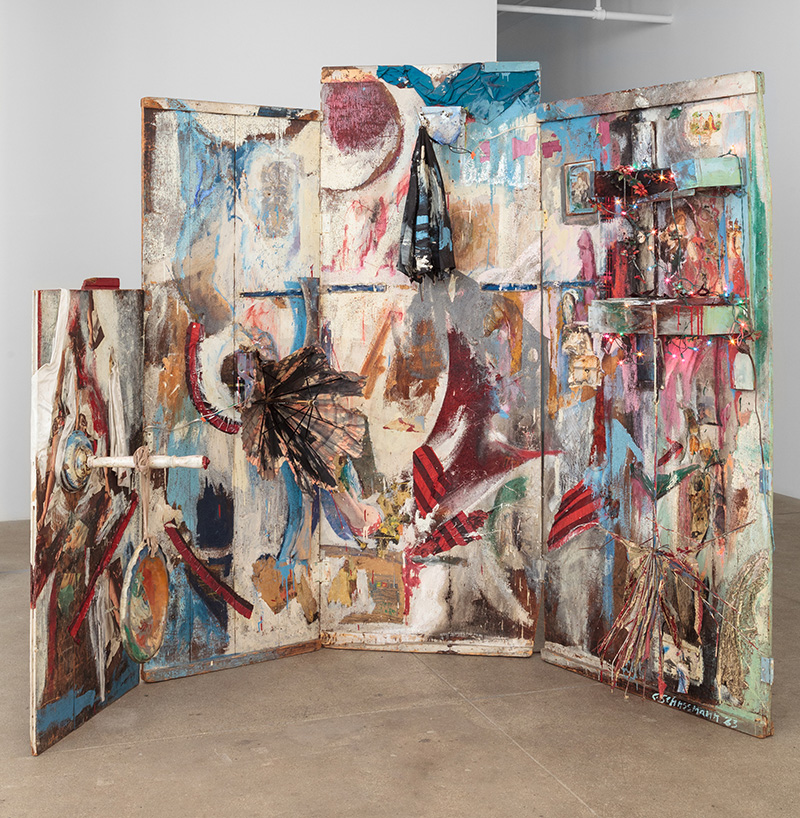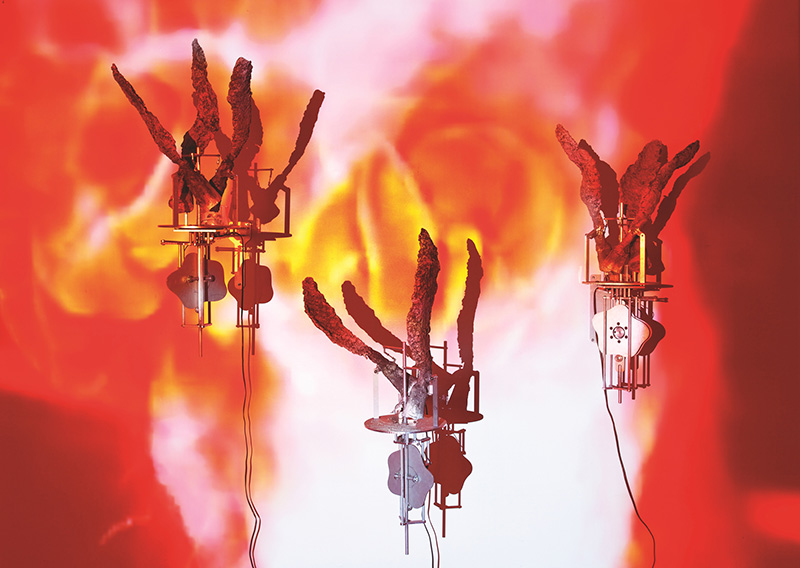ART CITIES:N.York-Carolee Schneemann
 Carolee Schneemann’s first major work, “Eye Body: 36 Transformative Actions” (1963), posed a question that the artist would continue to explore throughout her career: “Could a nude woman artist be both image and image maker?” The work was an amalgamation of painting, performance, and photography in which Schneemann’s own body became a material, proving the answer to be yes.
Carolee Schneemann’s first major work, “Eye Body: 36 Transformative Actions” (1963), posed a question that the artist would continue to explore throughout her career: “Could a nude woman artist be both image and image maker?” The work was an amalgamation of painting, performance, and photography in which Schneemann’s own body became a material, proving the answer to be yes.
By Dimitris Lempesis
Photo: MoMA Archive
“Kinetic Painting” the first comprehensive retrospective of the work of Carolee Schneemann in the United States, brings together over 300 works spanning her prolific six-decade career. As one of the most groundbreaking artists of the second half of the 2oth Century, Schneemann’s pioneering investigations into the social construction of the female body and the sexual and cultural biases implicit in traditional art historical narratives have had an indelible impact on subsequent generations of artists. The retrospective begins with rarely seen examples of the artist’s early paintings from the ‘50s, charting their evolution into assemblages made in the ‘60s which integrated found objects, mechanical elements, and painterly interventions. A central protagonist of New York City’s downtown Avant-Garde community, Schneemann explored hybrid art forms that culminated in experimental theater events. She was a co-founder of the innovative Judson Dance Theater and the first visual artist to choreograph for the ensemble. During this period, Schneemann began to position her own body in her work with the intent of performing the roles of “both image-maker and image.” Responding to representations of sexuality made predominantly from the perspective of male artists, Schneemann’s provocative pieces foregrounded her body in ways that challenged prevailing attitudes about female sexuality. In parallel, Schneemann’s outrage over the atrocities of the Vietnam War are starkly reflected in several of her works from the mid-1960s. The exhibition grounds Schneemann’s oeuvre within the context of her lifelong commitment to painting and action, tracing the early developments that would lead to her iconic performances and films from the ‘60s and ‘70s, through to her multimedia installations from the ‘80s, ‘90s, and ‘00s exploring feminist iconography, intimacy, and personal loss, as well as political disasters, captivity, and the destruction of war. The exhibition features several works of key historical significance that were recently acquired by The Museum of Modern Art, including the pivotal painting-construction “Four Fur Cutting Boards” (1963) and related photographic portfolio “Eye Body: 36 Transformative Actions” (1963), as well as the landmark installation “Up to and Including Her Limits” (1973-76) that was inspired by the physicality of Pollock’s painting technique, Schneemann translated that gesture into performance. She was suspended in a harness, nude and drew on the wall and floor with a crayon. The movement of her body was more important than the marks she made, it was this movement that was the art and is clearly inspired by her work in kinetic theater at the Judson Memorial Church. The rhythmic motions of Schneemann swinging back and forth at different speeds have an almost therapeutic effect and this piece was created after a particularly difficult time in her life. Schneemann performed the piece at various locations throughout 1973-1976, with many performances in New York City, but also in California, England, and Europe as well. In 1984, Schneemann created a video by editing footage from six of these performances together
Info: Curator: Sabine Breitwieser, Frank Gallipoli and Erica Papernik-Shimizu, Curattorial Assistant: Oliver Shultz, MoMA PS1, 22-25 Jackson Ave, Long Island City, New York, Duration: 22/10/17-11/3/18, Days & Hours: Mon & Thu-Sun 12:00-18:00, http://momaps1.org





